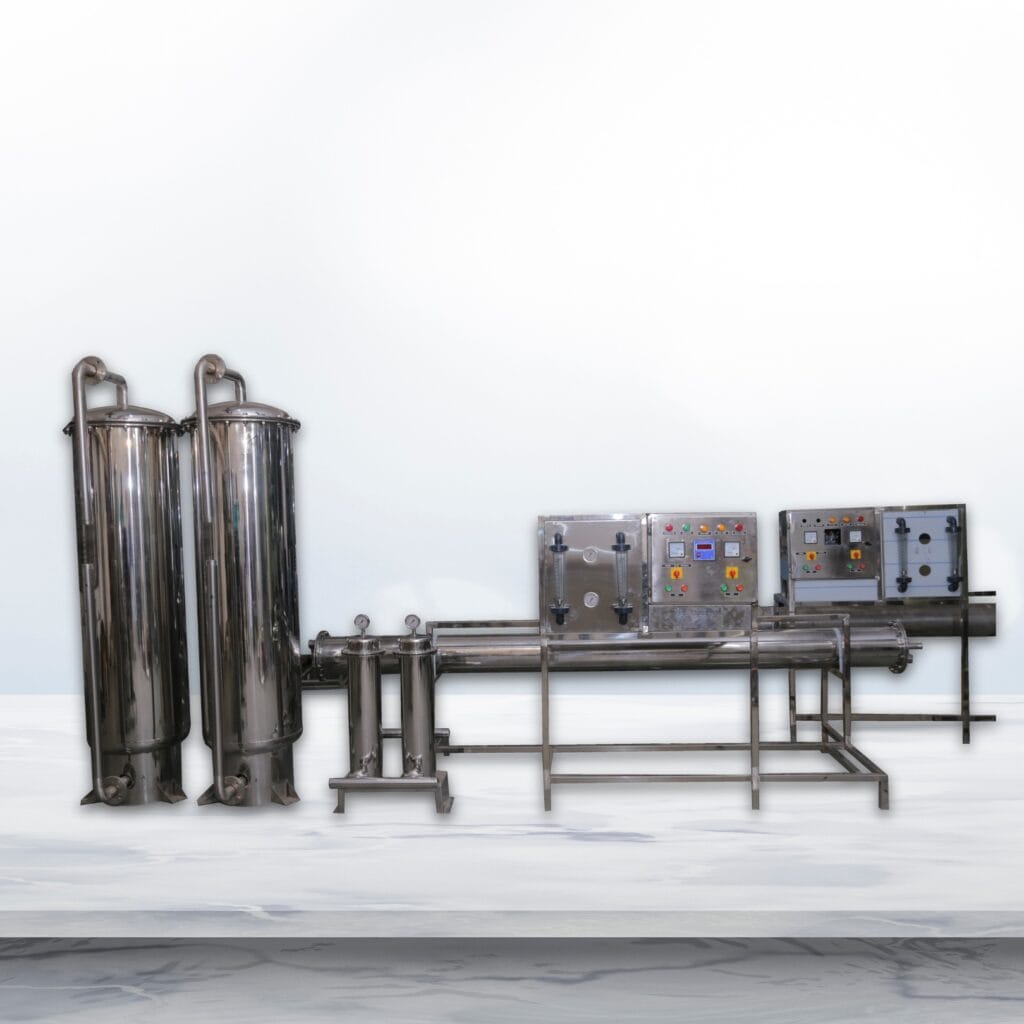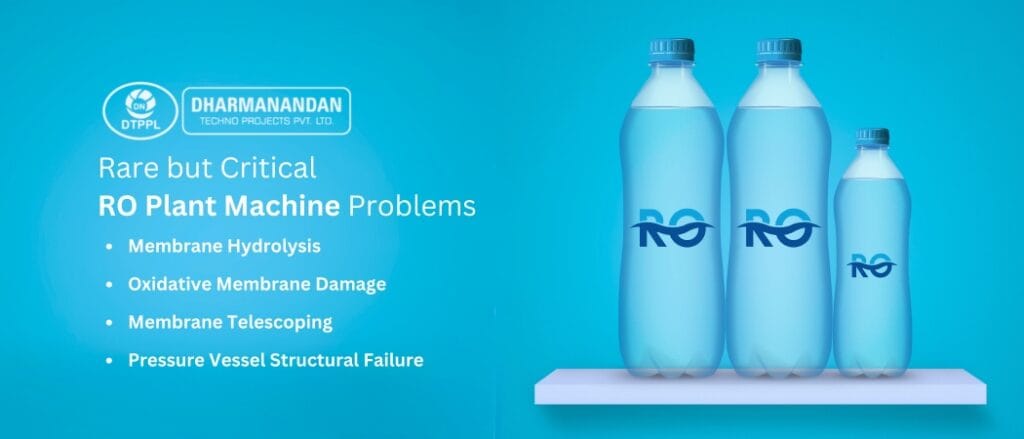
Table of Contents
Troubleshooting Guide for RO Plants: Practical Solutions for Real-World Challenges
April 16, 2025
In the complex and high-pressure environment of water treatment, the RO Plant stands as both a workhorse and a cornerstone. From commercial RO plants used in packaged drinking water units to large-scale industrial RO plants for manufacturing and municipal water solutions, these systems are engineered to provide high-purity water consistently. But like any complex system, they come with their own set of challenges.
This guide is drawn from real-world field experience—not just theory—and is designed to help operators, technicians, and plant managers master the art of troubleshooting. Whether you’re dealing with unexpected downtime, unexplained pressure drops, or quality inconsistencies in your RO Plant Water, this article will help you diagnose, solve, and prevent both common and catastrophic issues. With deep insights into component failures, performance monitoring, and predictive strategies, it’s the definitive guide for keeping your system running efficiently.

Common Issues in RO Plants and How to Solve Them
Let’s begin with the most frequently encountered problems in Commercial RO Plants and Industrial RO Plants, along with their root causes and practical solutions.
1. Decreased Permeate Flow
A drop in permeate flow rate is a red flag that something’s off in your RO system. Here’s what to look for:
Possible Causes:
- Membrane Fouling (scaling, organic, colloidal, or biological buildup)
- Low Feed Pressure
- High Feed Water Temperature
- Membrane Damage (physical or chemical)
- High Osmotic Pressure due to elevated TDS levels
Troubleshooting Steps:
- Inspect Pre-Treatment systems and filters for pressure drops or clogging.
- Check Feed Pressure against manufacturer specifications.
- Monitor Feed Water Temperature to ensure it’s within safe operating limits.
- Normalize Permeate Flow for temperature and pressure fluctuations.
- Perform a CIP (Clean-in-Place) using recommended solutions.
- Conduct Membrane Autopsy if cleaning fails to restore performance.
- Run an SDI Test to assess water fouling potential.
Key Insight: Always normalize performance data before drawing conclusions. Temperature and pressure shifts can mislead your analysis.
2. Increased Salt Passage
When salt levels in the permeate start climbing, water quality is at risk.
Possible Causes:
- Membrane Damage (tears, chemical degradation)
- Seal or O-Ring Failures
- High pH or Feed Temperature
- Severe Membrane Fouling
Troubleshooting Steps:
- Measure Conductivity of permeate from each membrane element.
- Inspect O-Rings for damage or poor sealing.
- Confirm pH and Temperature are within allowable limits.
- Perform Membrane Cleaning, starting with the suspected foulant.
- Replace Damaged Membranes as needed.
Key Insight: Pinpoint the faulty membrane element through individual conductivity checks. Don’t replace them all blindly.
3. High Pressure Drop Across Pre-Filters
When pressure spikes between your inlet and outlet, it’s time to dig deeper.
Possible Causes:
- Clogged Filter Media
- Channeling in Media Beds
- Air Binding
- Incorrect Media Grain Size
Troubleshooting Steps:
- Backwash Media Filters thoroughly.
- Ensure Proper Backwash Flow and Duration to prevent channeling.
- Inspect and Replace Cartridge Filters.
- Check for Air Traps and vent if needed.
- Replace Filter Media if it no longer functions properly.
Key Insight: Always monitor differential pressure—not just inlet pressure. A large delta signals restriction.
4. Pump Cavitation
Cavitation can quietly destroy pumps, often sounding like gravel being chewed.
Possible Causes:
- Low Water Level in feed tank
- Clogged Suction Line
- Excessive Suction Head
- Air Leaks in suction piping
- High Water Temperature
Troubleshooting Steps:
- Ensure Proper Water Level in feed tank.
- Clean or Replace Suction Strainers.
- Reposition the Pump, if necessary, to reduce suction height.
- Seal Air Leaks in the piping.
- Lower Feed Water Temperature, if feasible.
Key Insight: Cavitation must be addressed immediately. It’s silent but deadly for pump internals.
5. Chemical Dosing Pump Failures
A malfunctioning chemical dosing system can destabilize the entire RO process.
Possible Causes:
- Air Lock or Loss of Prime
- Clogged Suction Line or Strainer
- Leaking Fittings or Tubing
- Faulty Check Valves or Diaphragms
Troubleshooting Steps:
- Verify Voltage Supply is stable.
- Check Chemical Reservoir Levels.
- Prime the Pump to remove trapped air.
- Inspect and Clean Tubing.
- Replace Damaged Components like valves or diaphragms.
Key Insight: Consistent preventive maintenance is key to a reliable dosing system.
Click to View Videos of RO Plant Systems
Rare but Critical RO Plant Machine Problems
Not every issue is frequent—but some are high-impact and potentially catastrophic.
1. Membrane Hydrolysis
Cause: High pH exposure (>8.5) in cellulose acetate membranes
Symptoms: Reduced flow, increased salt passage
Solution: Control pH strictly; switch to TFC membranes for better resistance
2. Oxidative Membrane Damage
Cause: Exposure to chlorine or ozone
Symptoms: Rapid loss in salt rejection
Solution: Dechlorinate feed using activated carbon or sodium bisulfite before RO membranes
3. Telescoping of Membrane Elements
Cause: High pressure drop or concentrate line blockage
Symptoms: Collapsed membrane spirals
Solution: Monitor pressure, clean membranes, and replace damaged elements
4. Structural Failure of Pressure Vessels
Cause: Corrosion, overpressure, or material fatigue
Solution: Regular inspections and hydro-testing. Replace immediately if damage is found.
Critical Insight: This is a safety issue—never delay repairs to pressure vessels.

Predictive RO Plant Troubleshooting: The Smart Approach
Smart water treatment systems are not just reactive anymore—they’re predictive.
1. Data Logging & Trend Analysis
Log parameters like TDS, flow rate, pH, pressure, and conductivity to identify deviations.
2. Normalize Performance Data
Standardize data for temperature and pressure to accurately assess membrane performance over time.
3. Statistical Process Control (SPC)
Use control charts to track key indicators and spot performance drift early.
4. Remote Monitoring Systems
Monitor performance in real-time, diagnose problems faster, and reduce on-site dependency.
5. Machine Learning Models
Advanced Industrial RO Plant Manufacturers are integrating AI tools to predict failures and automate alerts.
View Video for More Details on RO Plant Machines

The RO Plant System Troubleshooting Mindset: Principles to Live By
Safety First
Never begin any diagnosis without proper PPE and lockout/tagout procedures.
Follow a Systematic Process
Start with basics and move logically. Avoid assumptions and guesswork.
Keep Records
Documentation helps track recurring problems and refines your PM plan.
Consult the Manual
Equipment manuals from a trusted RO Plants Manufacturer are your best reference for tolerances and operating ranges.
Don’t Hesitate to Ask Experts
Get in touch with your Industrial RO Plant Supplier or Commercial RO Plant Manufacturer like DTPPL for technical assistance and spares.

Reverse Osmosis Plant Stainless Steel
Capacity: 1000 LPH to 50,000 LPH
Conclusion: Troubleshooting Is a Skill—And an Art
Operating a Commercial RO Plant or Industrial RO Plant isn’t just about installing top-tier equipment—it’s about maintaining, monitoring, and mastering it. From recognizing early signs of trouble to proactively using data for predictive analysis, the art of troubleshooting goes beyond repair—it ensures reliability, performance, and compliance.
At DTPPL, we’ve walked this path with hundreds of clients, providing not just best quality industrial RO plant solutions, but also empowering teams with the knowledge and tools to run them effectively. Whether you’re calculating RO Plant setup cost, looking for RO Plant investment clarity, or seeking a trusted Commercial RO Plant Exporter, we’re your end-to-end partner in success.
Call to Action
Ready to elevate your RO Plant operations?
Partner with DTPPL, a trusted Industrial RO Plant Manufacturer, Commercial RO Plant Supplier, and RO Plants Exporter known for innovation, precision, and lifelong support.
Contact us today for guidance, troubleshooting, or a tailor-made RO plant solution to match your water treatment needs.
About Author

Director – Global Marketing and Sales
Mr. Bhavesh from Dharmanandan Techno Projects Pvt. Ltd. has played a pivotal role in elevating the DTPPL brand to the global stage, leveraging his exceptional expertise in marketing and communications. He is committed to helping clients achieve significant growth while strengthening their own brands. Dharmanandan Techno Projects Pvt. Ltd. is a leading manufacturer and supplier of water purification systems and turnkey solutions for mineral water plants. With years of experience in designing and delivering high-quality water treatment solutions, the company provides end-to-end services, including system design, installation, maintenance, and ongoing support. Specializing in scalable and customizable water plants, DTPPL has successfully served industries worldwide, ensuring clean and safe drinking water across diverse applications.




